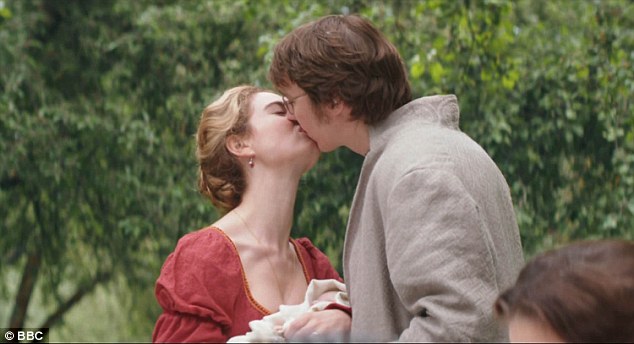For six hours and 17 minutes, Tom Harper’s War and Peace is a parade of armies marching or in battle, explosions, mutilations, death, love and seduction, incest, and constant social intrigue. The final 2:8 minutes is a picnic, a happy situation, if not a fairy tale ending fabricated to bring the narrative to a memorable close.
It’s not Tolstoy’s rambling and moralizing final chapters. His ending, seven years after, in December 1820, is a gathering of the families indoors at the Bolkonsky estate Bald Hills where Natasha and Pierre, Princess Maria and Nicholai, their children, extended family, and friends live in relative harmony.
According to Harper and screenwriter Andre Davies, after seven years, Natasha and Pierre & co. are happy mothers and fathers. They are enjoying a picnic in a summer orchard. This conceit is probably Davies’ if we can believe his unabashed decision to “have written one or two things that Tolstoy forgot to write.” Harper’s gambit is that neatly bundling the surviving characters into a pleasant picnic at which everyone is smiling gives viewers hope for a better world.
Among Harper and Davies’s other changes is that though seven years have passed, no one seems to have aged. Natasha, especially, is still youthful and charming. She no longer cares about her general appearance, has no fashionable dresses, doesn’t fluff her curls, and is utterly unseductive—all because “she had no time at all for it.” This flouts Tolstoy, who writes that Natasha is now frumpy after seven years of marriage and three children.
See Tom Harper. War and Peace (2016). The screenplay by Andrew Davies is based on Leo Tolstoy’s novel (1869); Interview with Andrew Davies, https://www.bbc.co.uk/blogs/writersroom/entries/5bbcb0cb-e28b-4605-894c-d9146f2cecb5
Sergei Bondarchuk. War and Peace (1966, restored 2019). The screenplay is by Sergei Bondarchuk and Vasily Solovyov and is based on Leo Tolstoy’s novel. Streaming: https://www.youtube.com/watch?v=z6X152raazA

